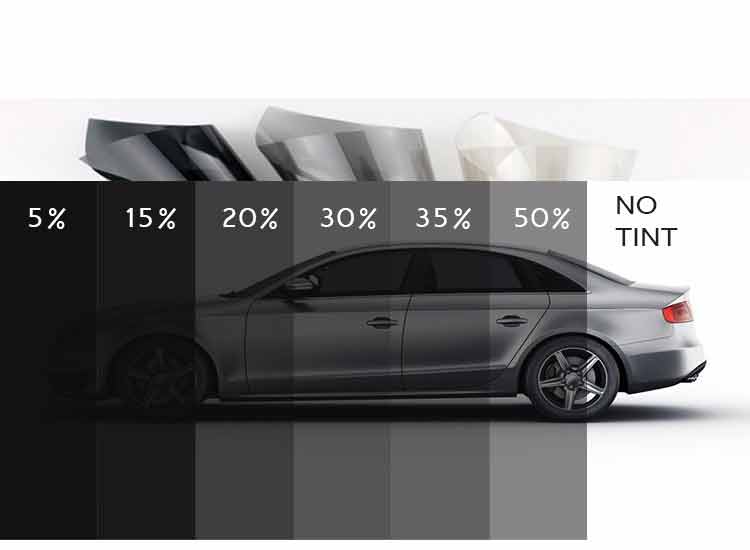Metalized window tint is a kind of Metallized sputtering film. Embedded in the material are metallic particles, which make it a thicker type of film. Formed of an adhesive base layer that bonds to your car window, the film also has a treated layer to block UV radiation and a metalized layer that reflects heat and darkens the glass. A final top coat acts as a protective layer to prevent scratches and nicks.
Designed with several layers, metalized tint films reflect heat from the sun, keeping it outside your car to protect the interior. The metal elements within the layers not only strengthens the window, making it more durable and shatter-resistant but also give off a shiny appearance from the outside. The reflective properties may not be the look you want, as most tints have a matte finish. However, metalized window tints are still functional.
Although the film has several positive qualities, the metallic properties often interfere with technology such as your GPS, cell phone and radio reception. Your phone signal may cut in and out, and your GPS system may default to being unusable. If you don’t use electronics often while driving, it may not affect you as much as someone who has electronic devices set up.
Metalized Tint Advantages
Metalized window tint:
- Blocks glare and UV rays.
- Doesn’t fade.
- Has durable features.
- Blocks and reflects heat before it enters your car, providing high heat reduction.
Metalized Tint Disadvantages
Check out the disadvantages of applying metalized window tint. It:
- Costs more than dyed tint because of metal particles.
- Has a shiny appearance, which may not be the aesthetic you desire.
- Interferes with radio and other technology like cell phone signals and tire-pressure monitoring systems.

Carbon Window tint
Are you looking for a matte-black finish for your windows that protects your interior?
Carbon window tint films give you a dark, matte finish with a sleek vibe. Hundreds of microlayers of polymer and carbon block infrared light from reaching the interior of your car. If you have leather seats or other upholstery material that fades, carbon tints can help reduce detrimental effects of UV light.
Without massive amounts of infrared reaching the inside of your car, the tint protects the upholstery and prevents it from fading. Carbon layers also keep the inside cool. You won’t need to rely on your air conditioning on full blast during the summer or put your system on high heat for the winter months.
With no metal integrated into the tint’s layers, the film won’t interfere with your technology or other parts of your vehicle. Carbon window tints don’t fade over time, unlike dyed films, making them more durable and longer lasting.
Carbon Film Advantages
Carbon tint:
- Doesn’t give off a “mirror” look.
- Gives an authentic black appearance.
- Is fade resistant.
- Protects you and your car’s interior from UV rays.
- Reduces heat and glare.
Carbon Film Disadvantages
An adverse characteristic of carbon films is that they’re often more expensive than dyed and metalized tints.
